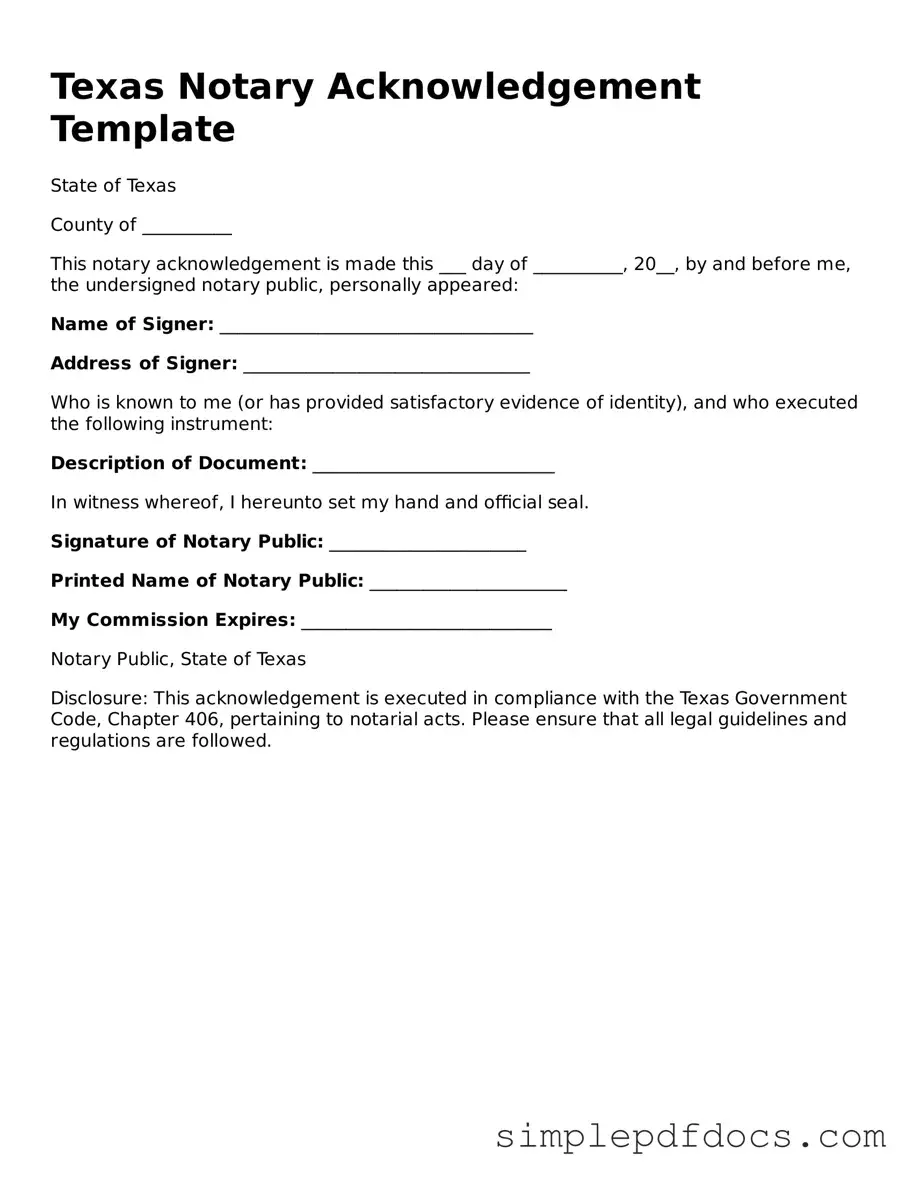Legal Notary Acknowledgement Document for the State of Texas
A Texas Notary Acknowledgement form is a legal document that verifies the identity of a signer and confirms their willingness to sign a particular document. This form is essential for various transactions, providing assurance that the signatures are authentic and voluntary. Understanding how to properly complete and use this form can help ensure that your documents are valid and legally binding.
Get Document Here
